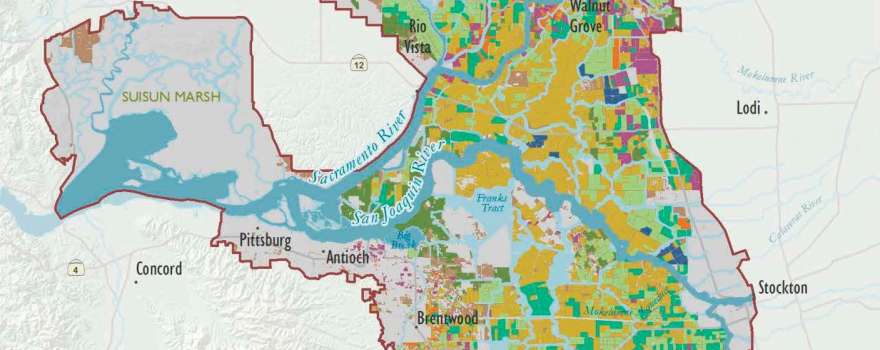 Mixed ruling finds the Delta Plan lacking in measurable targets, but that the Council did not exceed its authority in requiring reduced reliance on the Delta
Mixed ruling finds the Delta Plan lacking in measurable targets, but that the Council did not exceed its authority in requiring reduced reliance on the Delta
Yesterday, the Superior Court in Sacramento issued its ruling on the statutory challenges to the Delta Plan.
In general, the ruling finds that the Delta Plan does not meet the requirements of the Delta Reform Act with respect to establishing “quantified or otherwise measurable targets”, but left intact the Council’s authority to require reduced reliance on the Delta, among other things.
In May of 2013, the Council adopted a Delta Plan containing 14 regulatory policies and 73 recommendations. After it’s adoption, multiple parties, including the state and federal water contractors, the San Luis Delta Mendota Water Authority, the California Water Impact Network, the Central Delta Water Agency, the City of Stockton, and others filed lawsuits that challenged the the sufficiency and legality of the Delta Plan, as well as challenged the sufficiency of the Delta Plan’s Environmental Impact Report. The seven cases were consolidated, and the matter bifurcated into two parts: the statutory challenges and the CEQA challenges; this ruling covers the statutory challenges.
The seven lawsuits involve a myriad of challenges; many asserted that the Delta Plan lacks “quantified or otherwise measurable targets” for parameters such as reduced reliance on the Delta, reducing harm from invasive species, restoring more natural flows, and increasing water supply reliability. On the lack of measurable targets, the Court agreed. The Court also found that the Delta Plan fails to promote options for water conveyance and storage systems as required by the Delta Reform Act.
However, the Court rejected the state and federal water contractors claim that the Council exceeded its authority with regulation WR P1, which requires water suppliers to show they have attempted to reduce reliance on the Delta and to improve regional self-reliance before asking for more water from the Delta. The Court ruled that the Delta Plan’s regulation WR P1 is within its authority to control Delta water usage and that it is necessary to carry out the powers and duties identified in the Delta Reform Act. It also rejected claims from others that the Council failed to use the best available science with respect to flows and other issues.
Additionally, the Court ruled that the Delta Plan does not alter water rights or preexisting water rights protection as alleged by some of the lawsuits, and the Council was within its authority to exempt temporary transfers from the Delta Plan’s regulations through 2016 to enable the Council to gather the needed information.
Since the time that the lawsuits were filed nearly three years ago, much has happened: The Bay Delta Conservation Plan is unlikely to be completed as a habitat conservation plan as envisioned by the legislature at the time that the Delta Reform Act was written; the Delta Stewardship Council has resolved the issue of single-year transfers; the Council has begun work on an amendment to address Delta conveyance and storage; and the Council finally did pass a set of performance measures. How these developments match up to the ruling remains yet to be seen; the Council now has 120 days to file its response.
There were many other issues addressed in the 74-page ruling. Read it here: Delta Plan decision
Sign up for daily email service and you’ll never miss a post …
 Sign up for free daily email service and you’ll get all the Notebook’s aggregated and original water news content delivered to your email box by 9AM. And with breaking news alerts, you’ll always be one of the first to know …
Sign up for free daily email service and you’ll get all the Notebook’s aggregated and original water news content delivered to your email box by 9AM. And with breaking news alerts, you’ll always be one of the first to know …

